Last week, 75 bats successfully treated for white-nose syndrome were released back into the wild in Missouri – rare good news in what has become one of the gloomiest wildlife stories in North America.
White-Nose Syndrome (WNS), caused by a fungus, has devastated bat populations in the eastern United States since it first appeared here almost ten years ago. An estimated 5.7 million bats have died, and conservationists have scrambled to find solutions.
The bats released last week all had White-Nose Syndrome, and were successfully treated with a common bacterium that releases Volatile Organic Compounds (VOC) with anti-fungal properties.
This hopeful story may be an important first step in managing WNS. And its scientific backstory is just as fascinating.
This innovative treatment’s development began not with bats, but with bananas.
That’s right: the bananas on your supermarket shelf play a surprising supporting role in bat conservation.

From Bananas to Bats
When researchers at Georgia State University began research on the common bacterium Rhodococcus rhodochrous they were not thinking about bats. They were not even thinking about fungi.
They were thinking about fruit. When bananas, peaches and other fruit are picked, the plants emit their own chemical signals. These begin the fruit’s ripening process.
When fruit has to be delivered thousands of miles to supermarkets – as is so often the case – it’s a race against time. The fruit can ripen and rot before it makes it to the store’s shelves.
Researchers were investigating the effectiveness of VOCs – emitted by the bacterium R. rhodochrous – in delaying ripening in fruit.
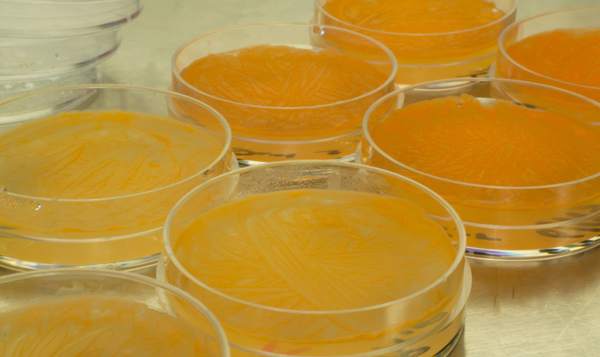
Researchers and graduate students began noticing another effect of these VOCs: fungus inhibition. The fruits exposed to the bacterium were not getting moldy.
Chris Cornelison was at the time a graduate student at Georgia State. He had been seeing the photos of dead bats piling up in caves, and a thought crossed his mind.
“I was standing there looking at a bucket of moldy bananas next to a bucket of bananas with no mold,” says Cornelison. “If the bacterium could be so effective on fungi on bananas, could it have similar effects on fungus on bats? It was one of those leaps of thought in science that maybe only a grad student could make.”
Cornelison, now a post-doctoral research associate at Georgia State, exposed petri dishes of the fungus that causes WNS (Pseudogymnoascus destructans) to the bacterium.
“The first exposure seemed too good to be true,” says Cornelison. “I had to test it five more times before I believed the results. It had dramatic effects on the fungus. It seemed like this could be a big step in managing white-nose syndrome.”
A Cooler Full of Bats
Other bat researchers and conservationists saw the potential for this bacterium and the potential to take action against a conservation issue that was frustratingly difficult to combat.
“When white-nose syndrome was first documented, we were scrambling to find information,” says Katie Gillies, director of the imperiled species program at Bat Conservation International (BCI). “We had to research the disease, understand how it works, how it spreads. But we also knew we had to take action.”
A number of partner organizations – including BCI, The Nature Conservancy and the U.S. Forest Service – worked with Georgia State researchers to test this bacterium as an initial tool to help manage WNS.
“In 2012, we tried our first crazy idea to build an artificial bat cave that could help us provide a hibernating place for bats that we could clean every year,” says Gina Hancock, state director for The Nature Conservancy in Tennessee. “Then when we formed a partnership with BCI, we kicked around what was the most promising work being done, and biocontrols came to the top of the list.”
Hancock notes that there was no public money being spent on this kind of research, so The Nature Conservancy and BCI sought proposals to accelerate the research.
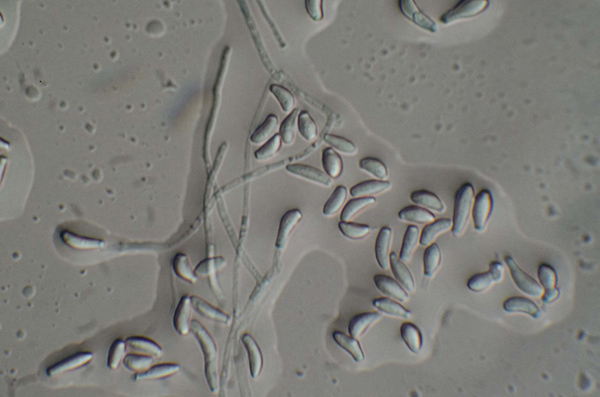
At Georgia State, the laboratory results continued to be impressive. The next step was to test the bacterium on bats in a laboratory setting, and it worked. Bats suffering from WNS recovered.
Of course, the bacterium is essentially a biocontrol – a biological method of controlling an invasive species. As Cornelison notes, the use of biocontrol has a checkered history, one filled with unintended consequences.
The impacts of the bacterium on other native organisms would have to be fully vetted. But in the meantime, bats could be treated in a limited field setting.
First, bats suffering from various levels of WNS were collected in the wild. They are not actually treated with the bacterium; it’s the VOCs that have the anti-fungal properties.
The bats were placed in a mesh bags, then put in a large Yeti cooler containing plates of the bacterium. They stay there for 24 to 48 hours.
The treated bats were then placed in an enclosure in a wild cave, where they spent their hibernation. This spring, they were collected and tested for presence of WNS.
“We tested for their fungal load and compared that to the fungal load when we first captured them,” says plant pathologist Daniel Lindner, of the U.S. Forest Service’s Center for Forest Mycology Research. “The bats had no detectable signs of white-nose syndrome and could be released.”
Some of the bats had such severe wing damage from the fungus that they could not be released (these animals will serve as conservation ambassadors), but 75 were released at the Mark Twain Cave Complex in Hannibal, Missouri.
The bacterium does not cure WNS; it arrests the development of the fungus and inhibits its growth. But it is still a tremendous first step in finding ways to manage the disease.
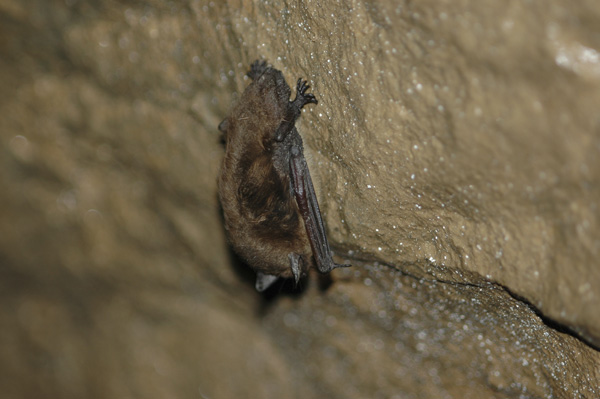
From Lab to Cave
Could this bacterium be used to treat caves? Yes, but first more tests are needed. The treatment has to be tested for potential toxicity to other cave organisms, including native fungi. (This is why fungicides have not been used to fight WNS; they typically kill all fungi, not just the harmful species).
“We have to make sure it’s not going to upset the cave’s delicate ecology,” says Lindner.
Once those tests are completed, how do conservationists actually treat a wild cave? Researchers are considered a nebulizer that pumps the VOCs into the cave. “It’s a very sophisticated version of a commercial grade air freshener, like what a hotel might use,” says Lindner.
It could lead to treatment of caves, mines and bunkers – potentially creating safe havens for bats. “In this trial, we had to touch every single bat,” says Gillies. “The goal is to optimize this tool so that we can treat a large number of bats without touching them.”
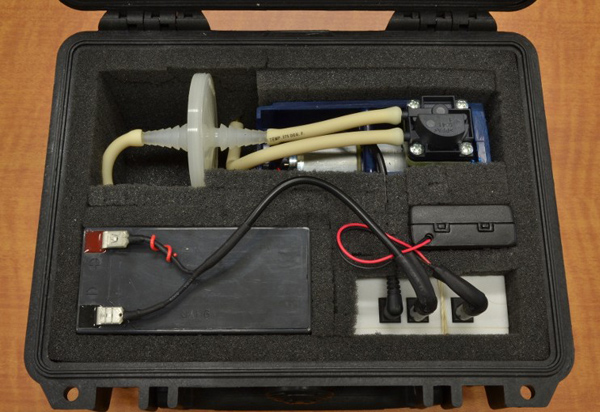
Even then, this tool will not eliminate WNS.
“This is one tool but we will need many more to manage this disease,” says Lindner. “But tools like this could help us manage the disease. It buys time for bats to adapt to the disease and develop resistance. That could prevent extinctions and allow healthy bat populations to rebound.”
For several years, talking to bat conservationists was an exercise in despair, in helplessness. WNS is still a major problem, and one that will continue to require innovation and research on a number of fronts.
But the sight of bats – bats that would have died of the disease – flying through the woods after successful treatment suggests a new chapter in this story. A new hope. “We are finally at the point where we can intervene on white-nose syndrome,” says Gillies. “It is not a silver bullet. We need more tools. But it is a first step. A huge first step.”
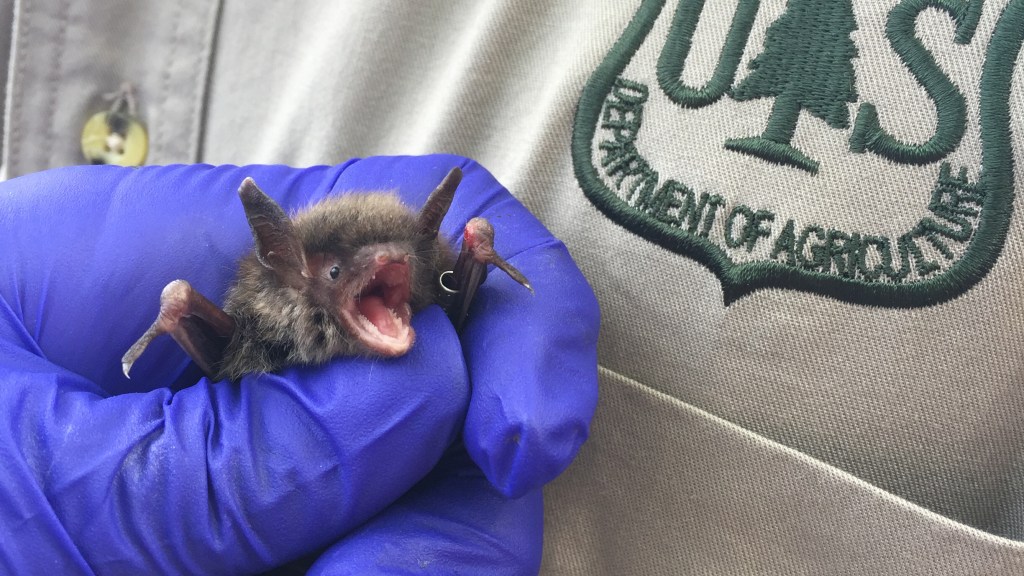



Awesome. Observation and questions at a moment in time with the confidence to think one can make a difference is a powerful combination. Follow-through and determination seal the deal. Bananas. Nature. Delicious and mysteriously wonderful.
I am in Texas and work on rehabilitating injured bats. I am loving this article! Wishing you the best of luck and success on this journey.
truly fascinating article & would love to hear further how the research and findings! While I am not in the science field, I have been concerned about the bats and this illness for some time.
Could we put plates of this bacteria in home bat boxes ? That would be a way of keeping constant exposure on at least one family of bats at a time.
I AM SO EXCITED THAT YOU HAVE FIGURED OUT WHAT WAS HURTING OUR LITTLE BATS!!!!! THANK YOU!!! MAYBE THE BEES ARE IN THE SAME BOAT!? CHARLOTTE K.
Yea for scientists! We miss our Little Brown Bats in Chautauqua, NY. first time in 40 years I had to swat at bugs while listening to the symphony.
Bravo on this breakthrough! My wife and I live near Trenton, NJ and my house had a several bats living in our roof. They disappeared about five years ago and we have not seen a bat flying in our backyard since. Their absence has let the mosquitoes take over to a point that it is uncomfortable to be in our backyard on warm summer nights anymore. You get eaten up by the mosquitoes very quickly there. Hopefully with this breakthrough New Jersey will be enjoying the return of our nighttime flying friends very soon. We can hardly wait!
Keep up the great work. We are interested in your success.
Auto-Misters like they use in horse barns for fly control. Small, movable and fairly cheap.
I used to have a fairly large colony here. Not a single one left. Miss them.
Please tell us more about the nebulizer. More tech please.
Great news, but why the caution? ALL THE BATS ARE DYING, there is nothing to lose if you treat the bunkers and mines with any fungicide, no delicate ecosystem to balance, caves, Ok, whatever. I’m frustrated with the slow pace and an overabundance of caution. It’s like taking your time saving an infant from a burning car because you don’t want to traumatize it. Ecologists drive me nuts sometimes
Thanks for all your work to save the bats!
How on a species ecological level is this a good idea?
We are nowhere near any sort of method for eradicating WNS in the wild.
“Saving” bats that would not survive on their own, and releasing them where they can mate with true survivors does damage to the only likely long term hope for these species to eventually re-fill their ecological niche. The hope is that natural survivors have some behavioral or genetic advantage that allowed them to survive and that they can pass down to future generations. Keeping non-survivors in the gene pool is a really good way to sabotage adaptation to the reality that WNS is probably here to stay.
Saving individual bats that would have died is great, but sadly they no longer have a place in the wild. The organizations saving those bats should be responsible for finding life time housing for them out of the wild.